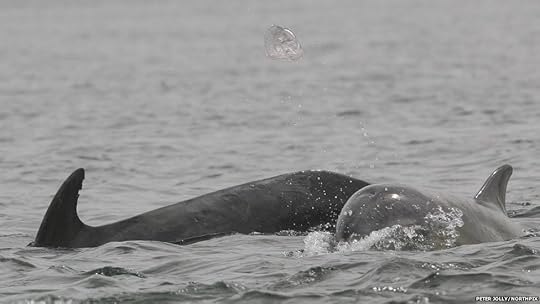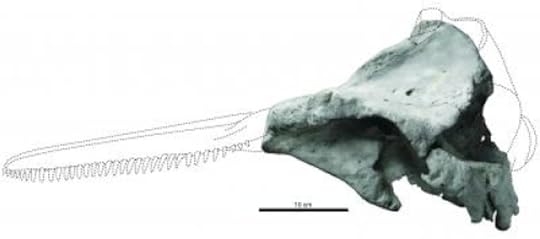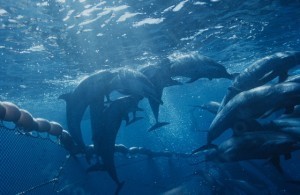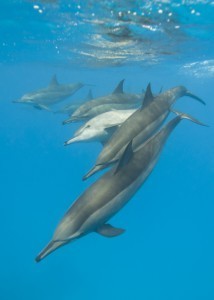Mark Caney's Blog, page 26
June 9, 2014
Japanese tourism operators to promote whale and dolphin watching as alternative to whaling
 Tourism operators in Japan have launched an initiative to promote whale and dolphin watching in the waters off the country’s many islands.
Tourism operators in Japan have launched an initiative to promote whale and dolphin watching in the waters off the country’s many islands.
With figures showing the industry is growing at six per cent a year, the Japan Whale and Dolphin Watching Council held its first meeting in Tokyo this week.
Tourism operators in Japan have launched an initiative to promote whale and dolphin watching in the waters off the country’s many islands.
With figures showing the industry is growing at six per cent a year, the Japan Whale and Dolphin Watching Council held its first meeting in Tokyo this week.
There are now more than 200 operators in the whale and dolphin watching industry which campaigners say offers a positive alternative to the slaughter of the mammals.
They say the industry is burgeoning and with it, the promise of bringing much-needed cash to coastal communities.
One of the organisations taking part in this week’s meeting in Tokyo is the International Fund for Animal Welfare.
Marine campaigns manager Matthew Collis says tourism based on whale and dolphin watching is a positive alternative to whaling for coastal communities.
Mr Collis says the industry is homegrown with Japanese making up the majority of people on watching tours.
“That’s why the tourism operators themselves have come together because they realise the value of that and the importance of that within Japan itself,” he said.
“I think it’s demonstrating that there’s a new generation in Japan that doesn’t look at whales as food but looks at them as living, breathing magnificent creatures that they are and that are far more fun to shoot with a camera than with a harpoon.”
The keynote speaker at the launch, Erich Hoyt, a senior research fellow with the charity Whale and Dolphin Conservation, says Japan’s national effort to promote whale and dolphin watching gives the operators the possibility of marketing internationally.
He says while the industry is very much homegrown, there is big potential to attract business from other parts of Asia and North America.
Full story: Australia Network News

June 7, 2014
Jelly tot: Young dolphin flips jellyfish
Scottish Highlands-based photographer Peter Jolly has captured images of a juvenile bottlenose dolphin playing with a jellyfish in the Moray Firth.
The photographs show the youngster flicking the creature into the air with its nose.
The Moray Firth and North Sea provides habitat for the world’s most northerly resident population of bottlenose dolphins.
Research published in 2012 suggested the population was “stable” with almost 200 animals. The species is protected by European Union rules.
[image error]

Source: BBC

May 28, 2014
May 25, 2014
Redescription of the oldest-known dolphin skull sheds light on their origins and evolution

This is the skull of the holotype of Eodelphis in lateral view.
Credit: Image courtesy Mizuki Murakami
[Click to enlarge image]
Dolphins are the most diverse family of living marine mammals and include species such as the bottlenose dolphin and the killer whale. However, their early evolution and fossil record has been steeped in mystery due to lack of good specimens. A new paper published in latest issue of the Journal of Vertebrate Paleontology re-describes the oldest species of dolphin with a new name: Eodelphis kabatensis. Although the partial skull was previously described in the 1970s the scientific community largely overlooked it. The new re-description has important implications for the evolutionary history of dolphins.
The skull of Eodelphis kabatensis was originally collected from a small tributary of the Oshirarika River in Hakkaido, Japan from an outcrop of the Mashike Formation. Researchers working on the specimen have narrowed its age to the late Miocene (13.0-8.5 million years ago), making it the earliest true dolphin species described. “The early evolution of true dolphins is still covered in mystery. Eodelphis kabatensis informs us about the morphology of early dolphins,” said lead author Mizuki Murakami.
Eodelphis is an important link in the evolutionary history of dolphins. Prior to this study, there was inconsistency between the fossil record of the dolphins and molecular-based studies. The oldest true dolphin fossils found were less than 6 million years old, while molecular studies suggested they originated and started to diversity between 9-12 million years ago. “Eodelphis kabatensis, being discovered from sediments that were deposited 8-13 million years ago, has largely resolved this discrepancy and provides the best glimpse yet of what the skull of the first dolphins may have looked like,” said Jonathan Geisler, a marine mammal paleontologist at the New York Institute of Technology College of Osteopathic Medicine.
In addition to its importance as the earliest true dolphin, this new study also incorporates the most comprehensive analysis of the relationships within the Delphinoidea, the group that encompasses toothed whales. By including Eodelphis in the analysis, the authors were able to get a much clearer picture of the evolution of the toothed whales. Furthermore, the presence of Eodelphis in the Pacific Ocean during the late Miocene has implications for the geographic history of dolphins. While more specimens need to be discovered, this study suggests that dolphins might have had their origins in the Pacific.
Source: Science Daily

May 17, 2014
EU wants ban on driftnets to save dolphins, tuna
 BRUSSELS — The European Union’s executive on Wednesday proposed to ban all use of driftnets in EU waters and on its vessels by year’s end to better enforce the protection of dolphins, sharks, swordfish and bluefin tuna.
BRUSSELS — The European Union’s executive on Wednesday proposed to ban all use of driftnets in EU waters and on its vessels by year’s end to better enforce the protection of dolphins, sharks, swordfish and bluefin tuna.
Driftnets stretching for miles close to the surface have often been responsible for the incidental capture and killing of thousands of marine animals that are important to the ecosystem. They were also responsible for indiscriminate fishing that often resulted in huge by-caches with little commercial value.
Often they were called the “walls of death” since they trapped and killed anything within nets that could measure dozens of kilometers.
“Fishing with driftnets destroys marine habitats, endangers marine wildlife and threatens sustainable fisheries,” said EU Fisheries Commissioner Maria Damanaki.
These type of nets were previously used in the hunt for endangered bluefin tuna in the Mediterranean until the EU banned such fishing in 2002. Even if laws already restricted its use, driftnet fishing often continued illegally and a total ban on driftnets would make catching cheats easier. The EU courts had to take action against Italy and France half a decade ago to stop such practices.
The proposal now goes to the EU’s 28 member states for approval.
“We need to close any possible loopholes and simplify control and enforcement,” said Damanaki. “The ban sends out a clear message that we no longer tolerate any irresponsible practices.”
Full story: Washington Post

May 16, 2014
Get the news from Dolphin Way on Twitter
May 14, 2014
World’s oldest orca (she’s 103!) spotted off Canadian Coast
Despite being a 103-year-old great-grandma, the orca named J2 — or, more affectionately, Granny — is in great shape. In little over a week, Granny and her pod have traveled 800 miles.
This weekend, Granny was spied swimming off the coast of Canada, after a trek up from northern California. The centenarian cetacean can be identified by a white marking on her back and a notch in her fin.
Michael Harris, the director of Pacific Whale Watch Association, tells Canadian newspaper The Province that her life span is an estimate based on her children’s ages. Whale experts have also confirmed Granny in photos dating back to the 30s.
According to the National Oceanic and Atmospheric Administration, wild female orcas usually live for about 50 or 60 years — although killer whales as old as 90 are not unheard of. SeaWorld, however, contends that “No one knows for sure how long killer whales live.”
That might be because impressive ages like Granny’s have never been mirrored in captivity. For whales born at SeaWorld and other aquaria, says the Whale and Dolphin Conservation, the average life span — excluding stillborn orcas — is only 4.5 years.
SeaWorld and marine parks profit off keeping orcas and other marine animals in captivity — despite evidence that captivity not only induces unnatural behaviors in whales, but also endangers trainers. Join us in pledging never to visit SeaWorld or other marine parks until they empty their orca tanks.
Source: TheDodo

May 12, 2014
Dolphin whistle warnings
 A team of researchers in Italy, Portugal, Spain, France, Britain and the United States has demonstrated that remotely monitoring the acoustical structures of dolphin vocalizations can effectively detect “evolutionarily significant units” of the mammal — distinct populations that may be tracked for prioritizing and planning conservation efforts.
A team of researchers in Italy, Portugal, Spain, France, Britain and the United States has demonstrated that remotely monitoring the acoustical structures of dolphin vocalizations can effectively detect “evolutionarily significant units” of the mammal — distinct populations that may be tracked for prioritizing and planning conservation efforts.
This finding, presented at the 167th meeting of the Acoustical Society of America, to be held May 5-9, 2014, in Providence, Rhode Island, suggests that placing remote acoustical monitoring platforms on ocean buoys and the like may be a viable, low-cost and automated way of monitoring populations of dolphins and rapidly alerting ecologists to the threats that confront them.
“Acoustical changes can be used for constant and continuous monitoring of population belonging to endangered species,” said Elena Papale of the University of Torino, who led the research. “We found that [by remotely monitoring dolphin whistles], it is possible to distinguish between evolutionary significant units.”
The discovery emerged from a large, multinational collaboration that pulled together data from five research groups based in Italy, Portugal, Spain, Britain and France. Those groups were already monitoring dolphins for a number of existing scientific studies. Other groups in the United States collaborated by providing sound analysis equipment. Shepherding all these groups of people and the flood of data they produced was a challenge, Papale said, but the greater challenge was working out how to distinguish the flood of whistles from one group of dolphins from another.
Animal vocalizations have acoustic characteristics that reflect an organism’s genes, its adaptation to ecological conditions and the interactions between their genes and the environment. The differences between groups of dolphins within the same species may be slight and hard to detect however, because morphological features, ecological conditions and socio-behavioral aspects of the creatures influence the structure of whistle. The problem is also a dynamic one, since vocalizations may vary in short time scale.
So at the start of the research, it was not clear whether acoustical analyses alone would be able to tease apart the common threads for given groups of dolphins and differentiate between them.
Papale and her colleagues compared 123 sightings of three dolphin species from the Atlantic Ocean and the Mediterranean Sea (Stenella coeruleoalba, Delphinus delphis and Tursiops truncatus). They analyzed whistles from 49 hours of audio recordings made at the same time as the sightings and tested whether they could definitively identify dolphin populations by analyzing the acoustical parameters of the whistles.
This allowed them to correctly assign more that 82 percent of data to the correct dolphin population, based solely on the acoustic structure, a proof of principle that the acoustic structure of whistles can be used to monitor recent or rapid changes in the local population biology.
“More work is still needed to develop an automatic system for population recognition,” Papale said. She added that other research groups are focusing on the development of software but for the moment only for species-specific identification, not intra-specific recognition.
Source: Science Daily









